Abstract
Human health effects have resulted from the inhalation of ambient acidic aerosols, and there is suggestive evidence that current North American levels of exposure are producing excesses in respiratory morbidity. Annual mean mortality rates have been correlated with ambient aerosol concentration indices, with SO4(2-), FP, IP, and TSP having a descending order as predictive coefficients. These pollutant indices also contain H+ in descending mass ratios, and may all be surrogates for H+ as an active agent. Controlled exposure studies in humans and animals provide evidence that acidic aerosols produce greater changes in respiratory mechanical function and rates of particle clearance than other constituents of ambient particulate matter. The strong acid content of the ambient aerosol has not been measured in any of the population based pollutant effects studies in which it is a likely causal factor. The absence of direct measurement data on acidic aerosol in these studies, and their reliance on surrogate indices such as SO2 and SO4(2-), precludes firm conclusions about exposure-response relationships. High priority areas for further investigation include systematic investigation of the spatial and temporal distribution of population exposures; extension and refinement of population response studies in relation to acid aerosol exposures; responses of normal healthy and asthmatic human volunteers to mixtures of acidic aerosols and oxidant vapors under controlled conditions of exposure and exercise intensity; and progression of changes in lung epithelia during repetitive daily exposures of experimental animals to acidic aerosols, oxidants, and their mixtures, with concurrent measurements of particle clearance and respiratory function.
Full text
PDF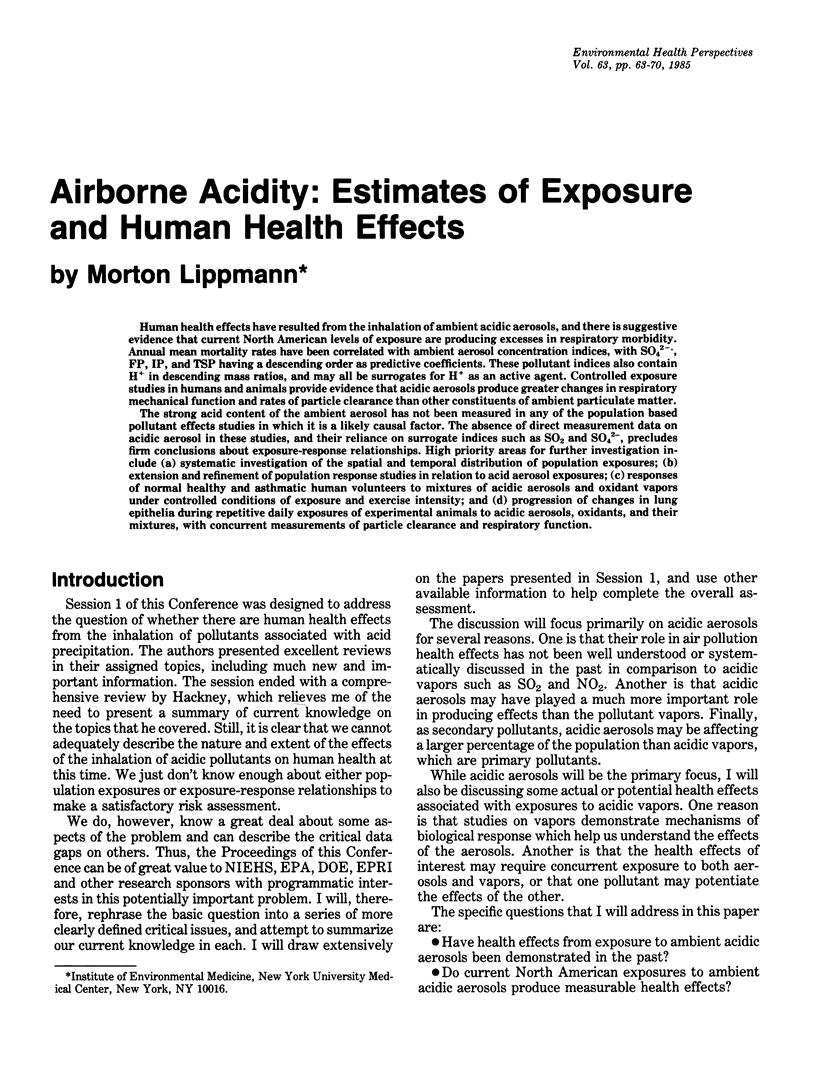
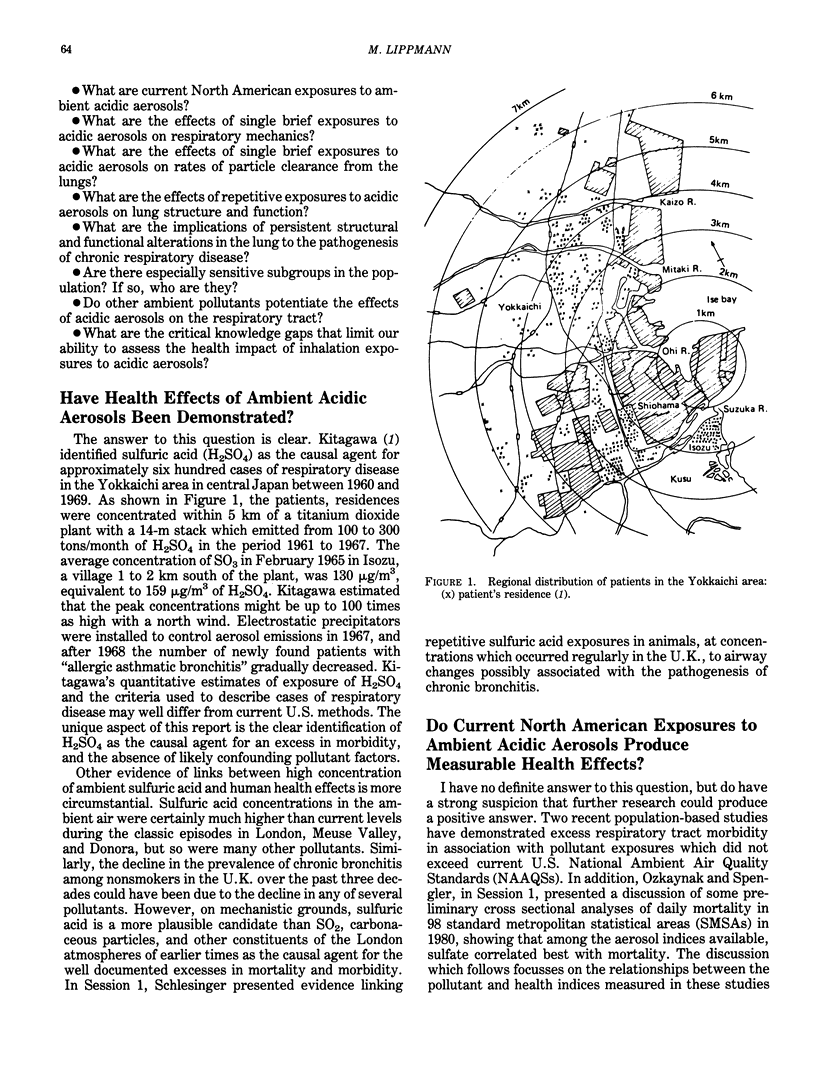
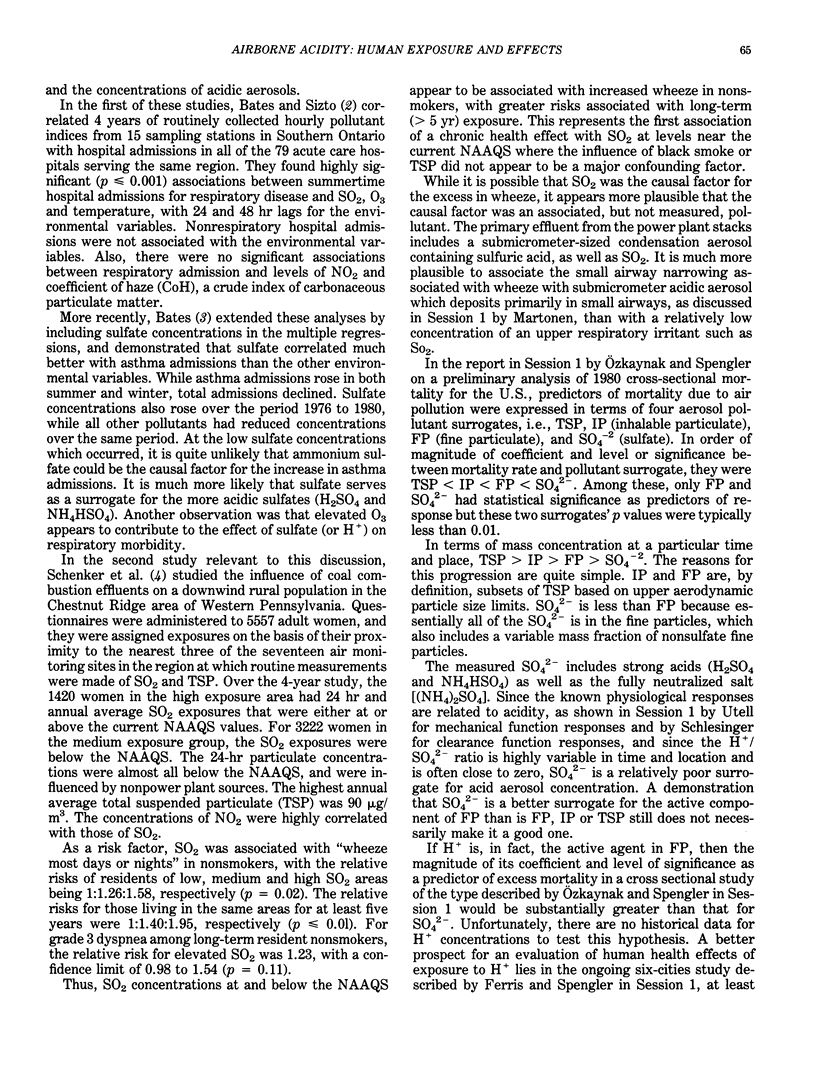

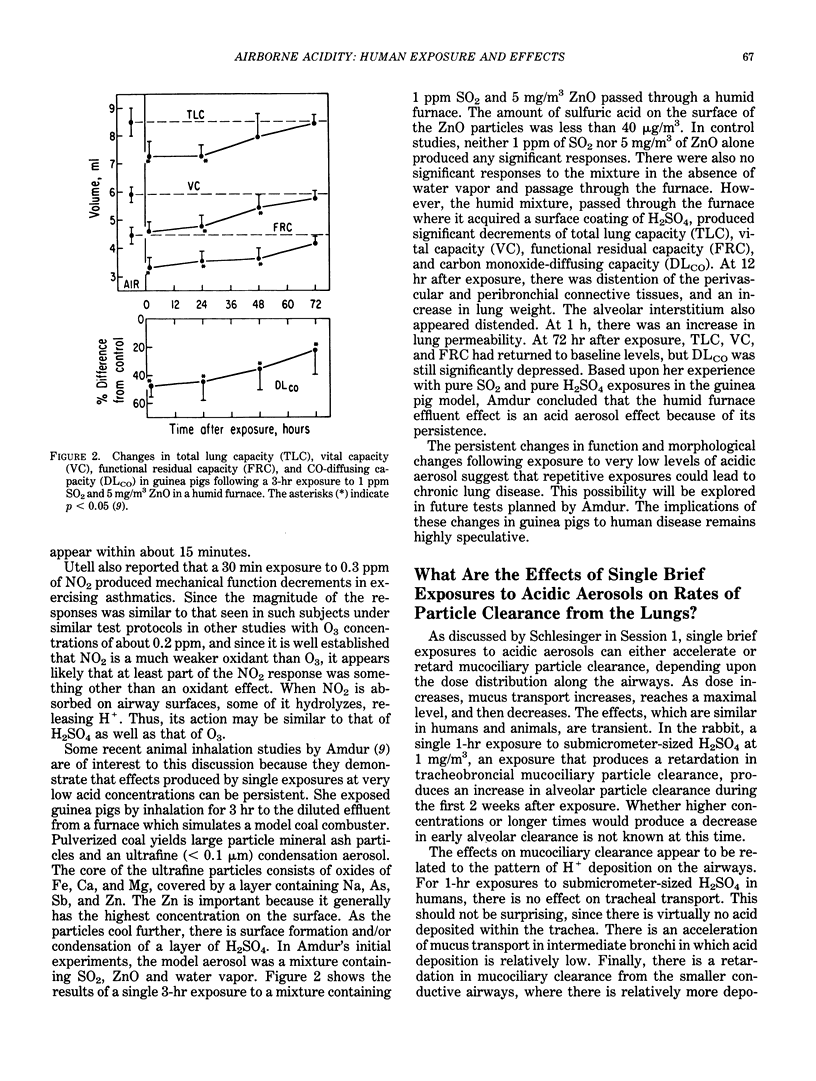
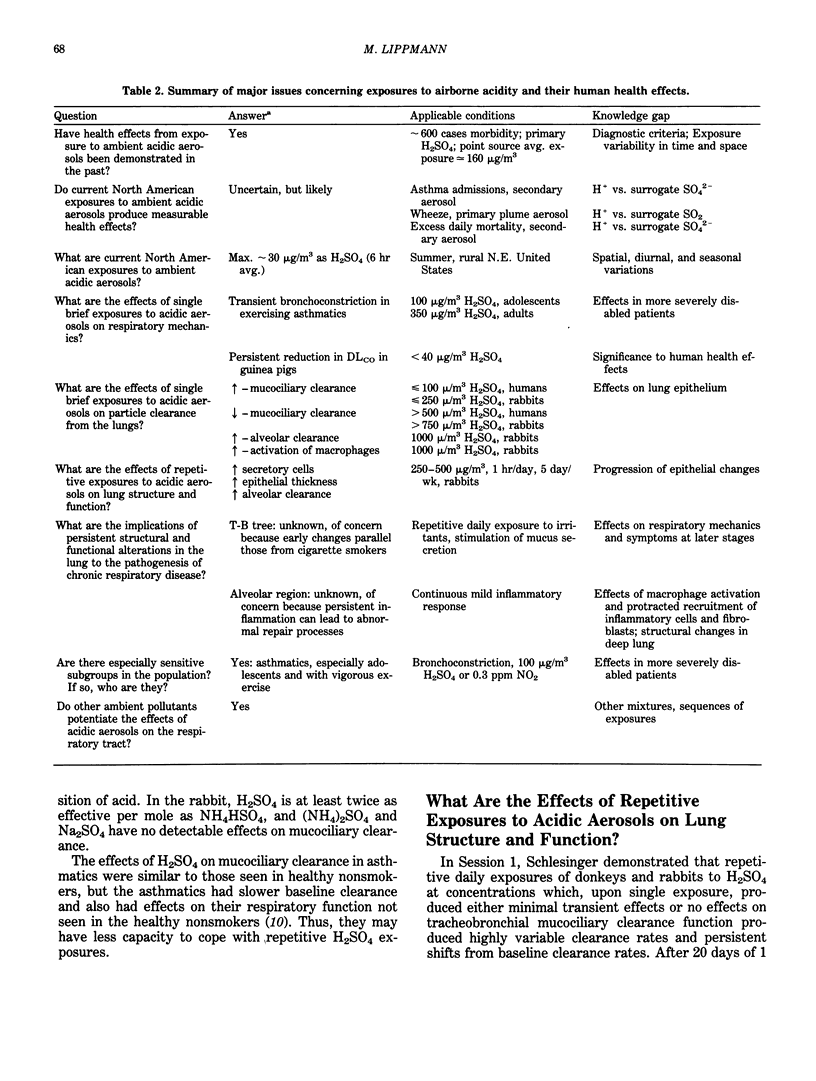
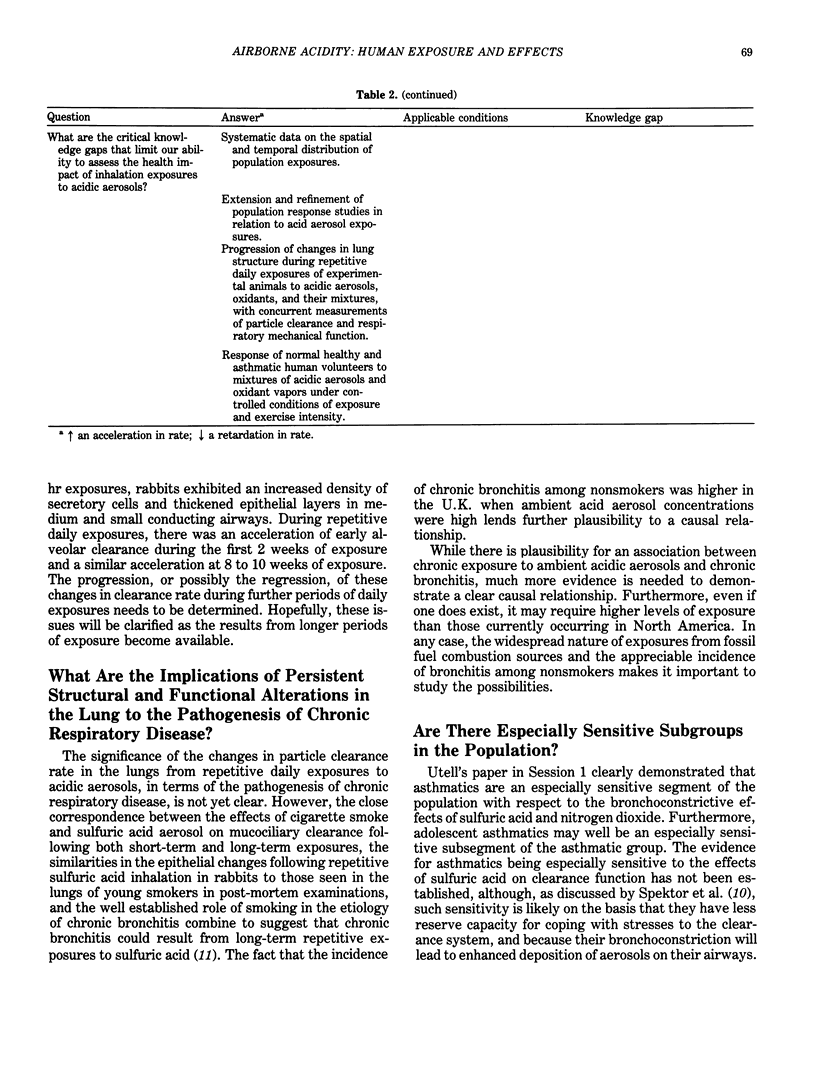
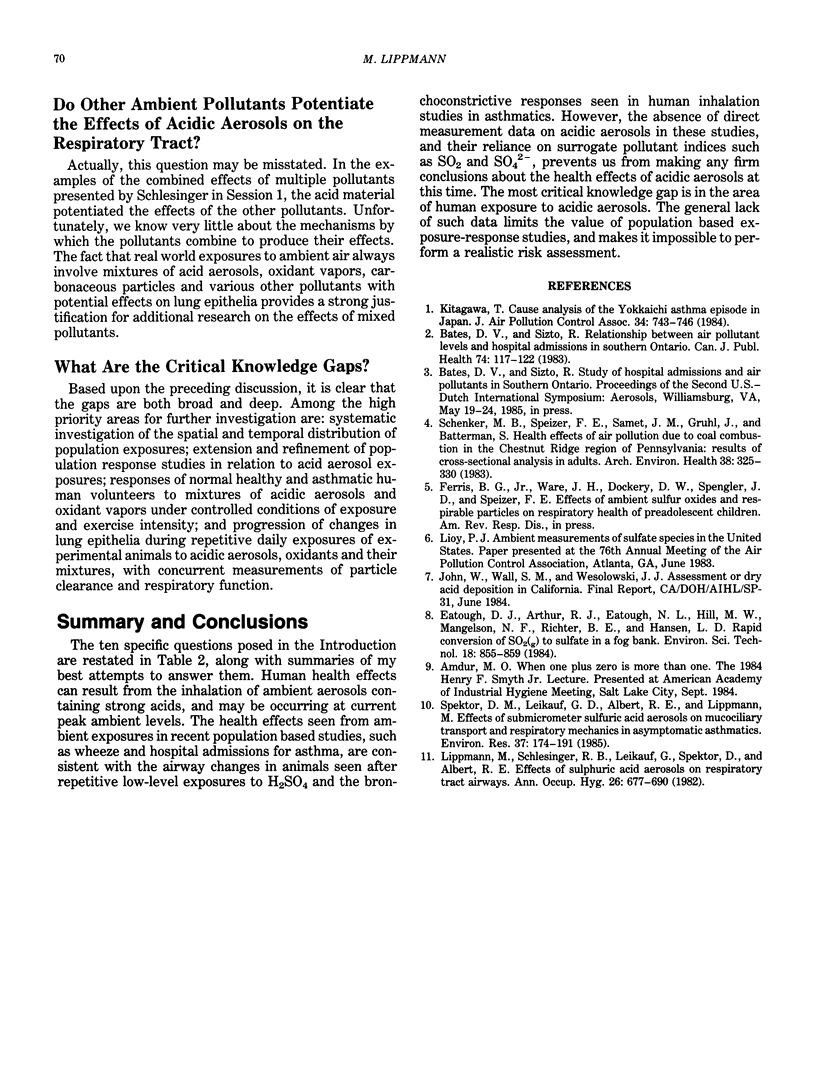
Selected References
These references are in PubMed. This may not be the complete list of references from this article.
- Bates D. V., Sizto R. Relationship between air pollutant levels and hospital admissions in Southern Ontario. Can J Public Health. 1983 Mar-Apr;74(2):117–122. [PubMed] [Google Scholar]
- Kitagawa T. Cause analysis of the Yokkaichi asthma episode in Japan. J Air Pollut Control Assoc. 1984 Jul;34(7):743–746. doi: 10.1080/00022470.1984.10465807. [DOI] [PubMed] [Google Scholar]
- Lippmann M., Schlesinger R. B., Leikauf G., Spektor D., Albert R. E. Effects of sulphuric acid aerosols on respiratory tract airways. Ann Occup Hyg. 1982;26(1-4):677–690. [PubMed] [Google Scholar]
- Schenker M. B., Speizer F. E., Samet J. M., Gruhl J., Batterman S. Health effects of air pollution due to coal combustion in the Chestnut Ridge Region of Pennsylvania: results of cross-sectional analysis in adults. Arch Environ Health. 1983 Nov-Dec;38(6):325–330. doi: 10.1080/00039896.1983.10545815. [DOI] [PubMed] [Google Scholar]
- Spektor D. M., Leikauf G. D., Albert R. E., Lippmann M. Effects of submicrometer sulfuric acid aerosols on mucociliary transport and respiratory mechanics in asymptomatic asthmatics. Environ Res. 1985 Jun;37(1):174–191. doi: 10.1016/0013-9351(85)90056-8. [DOI] [PubMed] [Google Scholar]


